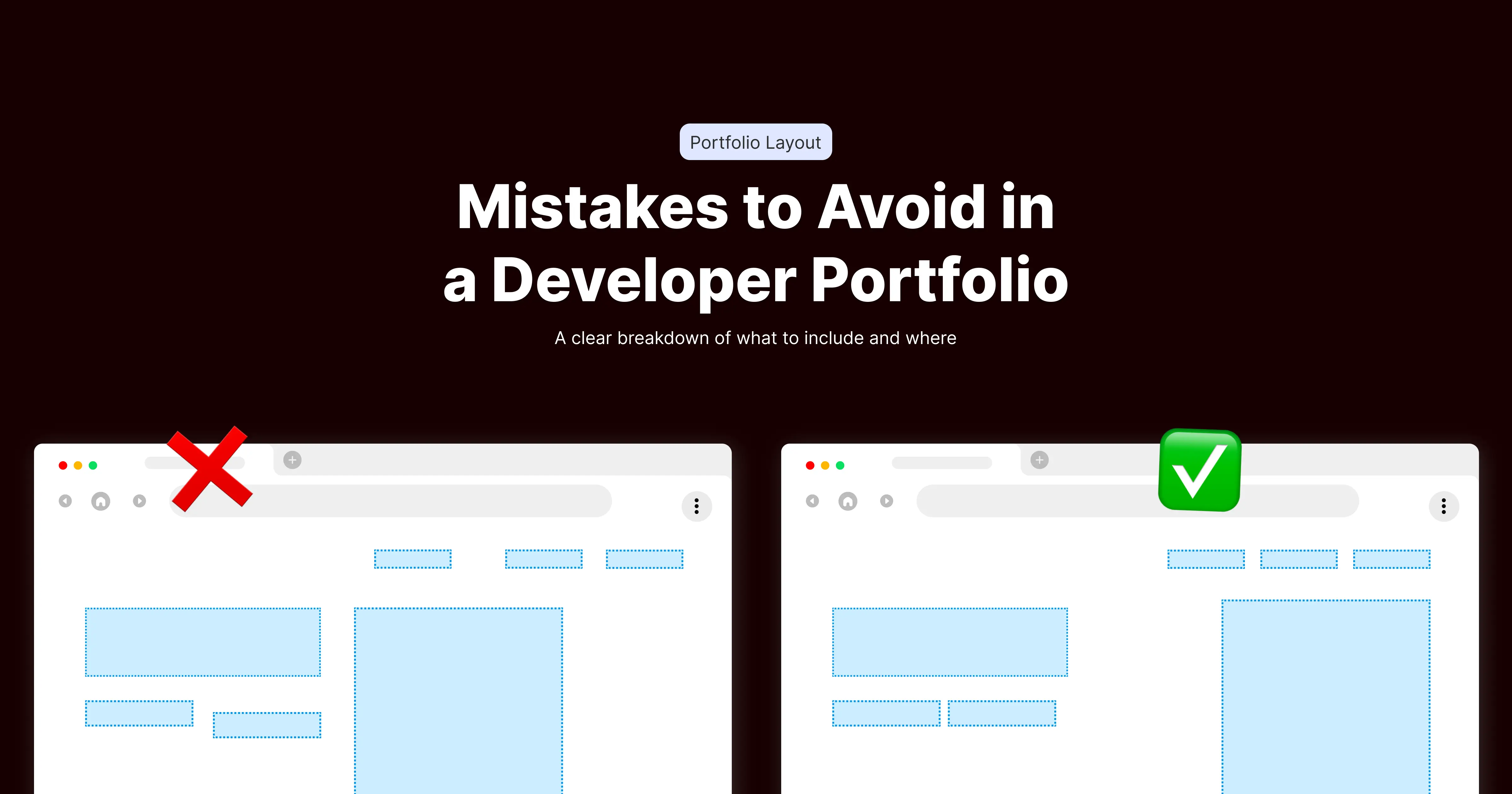Your developer portfolio is often the first impression you make on recruiters and hiring managers. A strong one can open doors to interviews, but a weak one can silently hurt your chances.
The tricky part? Many portfolios fail because of avoidable mistakes. In this guide, we’ll cover the most common developer portfolio mistakes and how you can fix them today.
1. Cluttered or Overdesigned Layout
A flashy design may seem impressive, but if recruiters can’t quickly find what they need, they’ll move on.
❌ Too many animations, colors, or distracting elements.
✅ Keep navigation simple and prioritize readability.
👉 See our guide on best color palettes for developer portfolios and best fonts for a portfolio for design inspiration.
2. No Clear Contact Information
Your portfolio should act like a business card. If recruiters can’t reach you, the opportunity is lost.
❌ Burying your contact form or only listing a GitHub username.
✅ Add a visible Contact Me button or a dedicated contact page.
3. Too Few or Too Many Projects
One project isn’t enough proof of your skills. Ten half-finished projects overwhelm viewers.
❌ A single “to-do list” app.
✅ 3–5 well-documented projects that reflect your strengths.
Check out our portfolio projects guide for help choosing the right ones.
4. Not Showcasing Your Role or Contribution
Recruiters don’t just want to see the end result — they want to know what you did.
❌ Dropping a GitHub repo link with no context.
✅ Explain your role, the tools you used, and the problem solved.
5. Weak or Missing "About Me" Section
Your portfolio isn’t just about code — it’s about you.
❌ Only listing your tech stack.
✅ Share a short bio, what you’re passionate about, and the type of work you’re looking for.
This builds trust and makes you more memorable.
6. Portfolio Not Mobile-Friendly
More recruiters than ever check portfolios on their phone. If your site breaks on mobile, it sends the wrong signal.
❌ Fixed-width layouts or tiny text.
✅ Use responsive design so your portfolio looks good everywhere.
7. Broken Links or Placeholder Text
A “coming soon” page or lorem ipsum text signals that you don’t finish what you start.
❌ Dead GitHub links.
✅ Double-check all project links and live demos before publishing.
8. Ignoring Performance and Accessibility
A slow-loading, inaccessible site hurts your credibility as a developer.
❌ Huge images with no compression, missing alt text.
✅ Optimize assets and make your site usable for everyone.
Accessibility shows professionalism and attention to detail.
9. Not Tailoring Your Portfolio to Your Role
A recruiter looking for a frontend developer expects to see polished UI/UX work. A backend recruiter expects scalable systems.
❌ Generic “coding projects” with no alignment.
✅ Showcase projects that fit the jobs you’re applying for.
10. Not Updating Your Portfolio
An outdated portfolio makes it look like you’ve stopped learning.
❌ Last update: 2021.
✅ Refresh your portfolio every 6–12 months, even if it’s just updating copy or adding one project.
Final Thoughts
Your portfolio should sell your skills, not hide them. By avoiding these common mistakes, you’ll create a portfolio that recruiters actually enjoy reviewing — and one that sets you apart from the crowd.
Want inspiration? Check out our collection of best developer portfolios.
